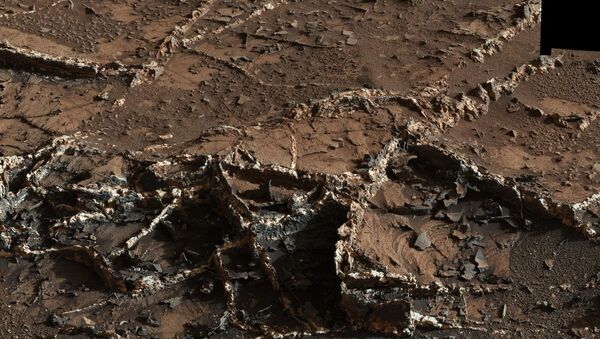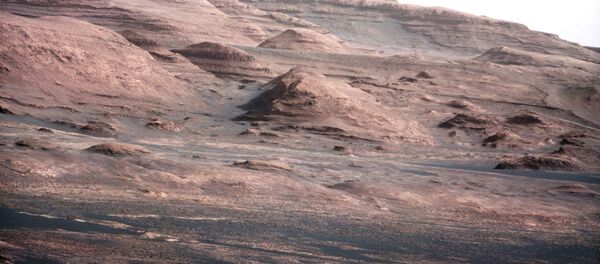"Not only does this help us try to understand the chemistry of the rocks that we measure in the region, but on a different sort of scale it tells us that fluids were around on Mars for a long time", according to Linda Kah, a sedimentary geologist at the University of Tennessee and a member of Curiosity’s science team.
The mineral veins were discovered at the so-called 'Garden City' site located on the slopes of Mount Sharp; the veins stick up to 6 centimeters (2.5 inches) out of the rock.
Kah said that some of these deposits "look like ice-cream sandwiches: dark on both edges and white in the middle." She explained that "these materials tell us about secondary fluids that were transported through the region after the host rock formed."
Earlier, the Curiosity rover spotted other bright veins rich in calcium sulfate on Mars.
But Garden City veins seem to be different from previous samples, with the darker material in the veins suggesting an early episode of water on Mars and the brighter mineral deposits showing a later episode of water flow.
Equipped with a complex suite of tools, Curiosity has been exploring rocky configurations since landing on the Martian surface in 2012.
The past six months have seen the rover focusing on Pahrump Hills, where the layers of rock span an elevation of just 10 meters.
Even though an environment may have existed that would have featured the right chemical ingredients for life (water that was not too salty and not too acidic had been found on Mars earlier), more data are needed to confirm clues that microbial life once thrived on the Red Planet.




